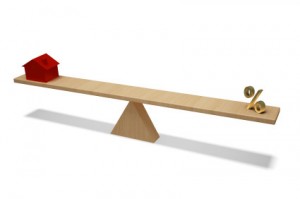
Serious delinquency rates at Fannie Mae and Freddie Mac were down in February, yet further evidence of a housing recovery.
The housing market received another dose of good news late last week with delinquency rate reports from Fannie Mae and Freddie Mac, which both declined in February.
The reports are the latest in a long line of positive developments for the housing market, a string of successes that has many analysts uttering the coveted “recovery” word for the years ahead.
For Fannie, the seriously delinquency rate decreased from 3.90 percent to 3.82 percent in February, with credit-enhanced single-family mortgages dropping by an encouraging 26 basis points and the multifamily rate declining from 0.52 percent to 0.43 percent. Overall, the GSE’s rate has fallen from 4.44 percent last February and 5.59 percent in February 2010, which was the rate’s historical high.
Though Freddie’s report was not quite as marked, it did still show declines in its delinquency rates. The single-family rate was down from 3.59 percent in January to 3.57 percent in February, and that’s a further decrease from the 3.82 percent in February 2011 and the 4.20 percent in February 2010, when, like Fannie’s rate, it peaked.
As Calculated Risk has noted on numerous occasions, the normal delinquency rates for the GSEs is 1 percent or lower, so the rates do still have some ground to cover; however, declines will probably be even more pronounced following the mortgage settlement.
Also, the delinquency rate data was hardly the only upbeat perspective on housing; several other outlets, both public and private, complemented its findings.
First, the Urban Land Institute released a widely-circulated report on the American housing market, compiling the views and analyses of 38 real estate economists and analysts on the real estates next three years.
The results were encouraging. In addition to predicting a near-doubling in single-family housing starts from 2011 to 2014, the panel also estimated that prices could rise as much as 3.5 percent in the same time period.
Peter Linneman, the CEO of the American Land Fund and a respondent in the survey, said in a Wall Street Journal piece on survey’s findings that opportunity still remains in home construction.
“Despite the run-up on construction during the housing boom, ‘we’ve actually under-produced’ in the last decade,” Linneman said in the article.
Perhaps the best news of last week, though, was that even Jamie Dimon, the CEO of JPMorgan Chase, is feeling confident about housing. In an interview with CNBC, Dimon said there are quite a few encouraging signs for housing going forward.
“I believe we’re very close to the inflection point. People look at prices that are still coming down but all the other signs are flashing green,” Dimon said. “[T]he shadow inventory everyone talks about is lower today than it was 12 months ago. It will be a lot lower 12 months from now.”
And all the while, the U.S. economy is “getting stronger all the time. It’s broad-based, companies are in great shape…Consumers are in great shape,” the noted CEO said.
